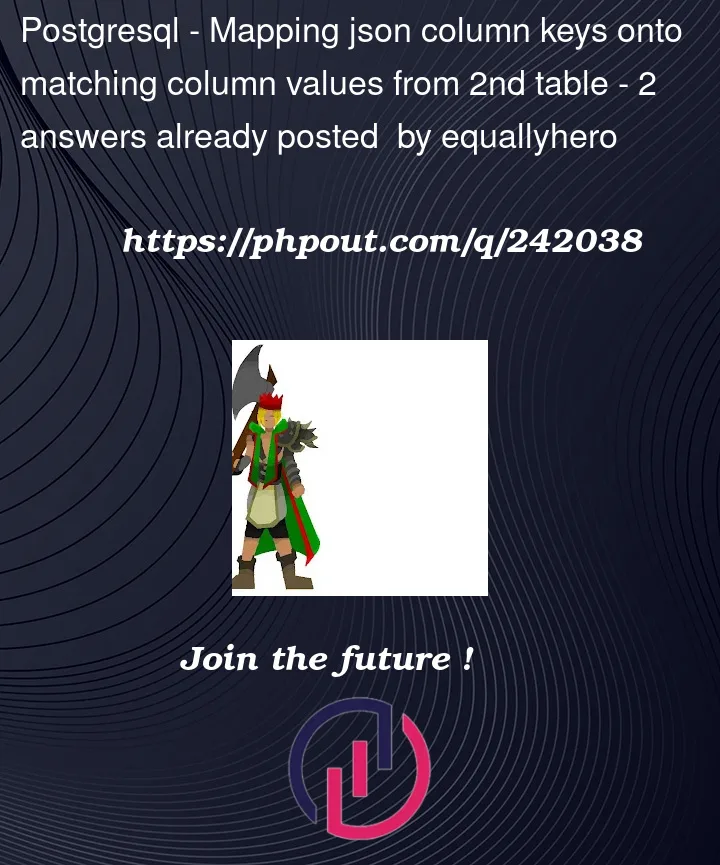I have a table A, where data is a json column, and timestamp is a timestamp with timezone column:
| timestamp | data |
|---|---|
| 2023-08-29 13:00:00-04 | { "a_123":{ "temp":85, "uv":5, "rain":0 }, "b_123":{ "temp":85, "uv":5, "rain":0 } } |
| 2023-08-29 14:00:00-04 | { "a_123":{ "temp":70, "uv" 1:, 1"rain":5 }, "b_123":{ "temp":73, "uv":1, "rain":7 } } |
| 2023-08-29 15:00:00-04 | { "a_123":{ "temp":83, "uv":4, "rain":1 }, "b_123":{ "temp":87, "uv":7, "rain":0 } } |
I have a second table B:
| id | location | elevation | tag |
|---|---|---|---|
| a_123 | 04662 | 155m | blue |
| b_123 | 84003 | 15m | yellow |
I can map individual data column keys eg. a_123 from table A onto the matching id from table B but in my case the data column keys from table A are dynamic.
How would I produce a table where the nested timestamp data is mapped to each id as follows, from the sample data provided above? Thanks for any help/docs.
| id | location | elevation | tag | data |
|---|---|---|---|---|
| a_123 | 04662 | 155m | blue | { "2023-08-29 13:00:00-04":{ "temp":85, "uv":5, "rain":0 }, "2023-08-29 14:00:00-04":{ "temp":70, "uv":1, "rain":5 }, "2023-08-29 15:00:00-04":{ "temp":83, "uv":4, "rain":1 } } |
| b123 | 84003 | 15m | yellow | { "2023-08-29 13:00:00-04":{ "temp":85, "uv":5, "rain":0 }, "2023-08-29 14:00:00-04":{ "temp":73, "uv":1, "rain":7 }, "2023-08-29 15:00:00-04":{ "temp":87, "uv":7, "rain":0 } } |




2
Answers
fiddle
Extract the object fields from
a.datawithb.idas key value using the basicjsonoperator->. (This way we don’t process unrelated keys that also might be there.)Build new objects with
a.timestampas key and the extracted value from step 1., and aggregate them into a nesting object in one step withjson_object_agg().Do all of this in a
LATERALjoin.LEFT JOIN LATERAL ... ON true, to be precise. See:Aggregating in a lateral subquery keeps you from having to aggregate the outer table
bas well, which would be unnecessary cost and complication.The operator
?in the optionalWHERE a.data ? b.idexcludes rows without matching top-level key early. Only works forjsonb. Uses an index efficiently – if only a small fraction of rows in tableAmatches.You said "json", but I’ll assume the more commonly used
jsonb. The query works forjson, too, with the respective functionjson_object_agg(), and without theWHEREclause.Using
jsonb_eachwith successivecross joins:See fiddle